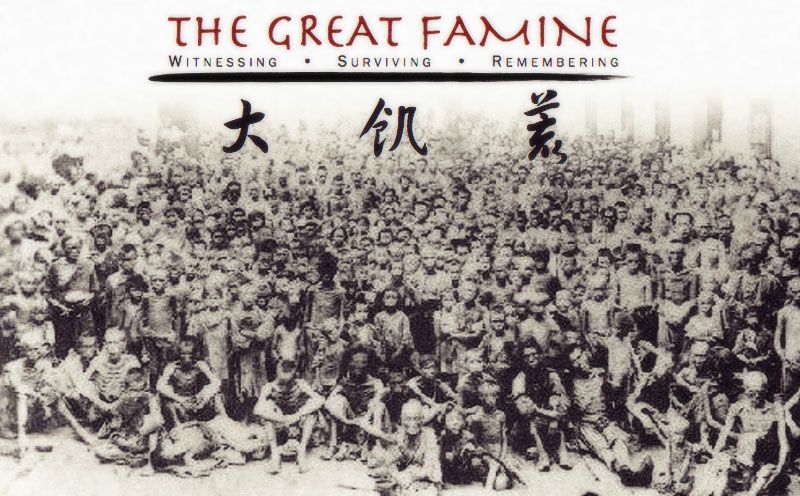
China, which embarked on the mission of becoming a superpower by showing its economic and military might to the world, now may be brought to its knees over a shortage of food.
Reduction in overall domestic food production; a recent deluge in the Yangtze River basin, the rice bowl of China; and a slash in imports, mostly aggravated by deteriorating diplomatic relations, has caused Beijing to hit the panic button.
Chinese President Xi Jinping recently launched the “Clean Plate” campaign to ensure that food supplies do not deplete quickly and bring about a repetition of the 1959 Great Famine, in which millions of people starved to death.
And recent skirmishes along the Sino-Indian border, as well as China’s aggression in the South China Sea, may be Xi’s strategy to divert attention from China’s pending food crisis, just as Mao Zedong did in 1962 to mask the failed Great Leap Forward movement.
The Yangtze River basin badly hit
The Yangtze River basin, which accounts for 70 percent of China’s rice production, has seen the worst floods since 1939, damaging millions of acres of cropland.
According to the China Meteorological Administration, the country has experienced a 20 percent increase in heavy rainfall since 1961, taking the water level of more than 400 rivers above the flood control line, with 33 of them reaching record highs.
The heavy rain has ravaged vast swaths of industrial and agricultural land, and experts warn the worst may be yet to come.
Food prices are soaring
Soaring prices of agricultural products are stoking food-security jitters in China. According to the China’s National Bureau of Statistics, food prices went up by 13 percent in July, compared to the previous July.
The price of pork rose about 85 percent. On a year-on-year basis, food prices have increased by 10 percent in 2020 — the price of corn is 20 percent higher and the price of soybeans, 30 percent.
According to global financial group Nomura, China’s agricultural GDP could fall by nearly a percentage point in the July-September quarter, rendering losses of $1.7 billion (USD) in the agriculture output.
Chinese brokerage firm Shenwan Hongyuan has anticipated that China could lose 11.2 million tons of grains this year, compared to last year.
Although Xi claimed that the country’s grain output increased this year, imports of grains have gone up almost 22 percent, to 74 million tons in the first half of this year. Imports of wheat went up by a whopping 197 percent during the period.
This has forced Beijing to release 62.5 tons of rice, 50 tons of corn and 760,000 tons of soybeans from its strategic reserve — the amount is significantly higher than last year.
Insect plagues
Insect infestations also have caused great damage to China’s food sector.
An invasion of fall armyworms and locusts devoured millions of acres of wheat and corn crops this year.
African swine fever has forced authorities to kill more than 180 million pigs, or about 40 percent of China’s swine population, causing prices to soar. Imports of meat have jumped significantly in just one year.
Political tensions
It may come as no surprise that China has spoiled bilateral relations with those nations on whom it depends for its food. Increased hostilities, coupled with pandemic-related disruption in the supply chain and global commodity markets, have created huge barriers for Beijing to meet its domestic consumption demands and ensure enough stock for “rainy days.”
The United States, Canada, Australia, New Zealand and Indonesia are among the top exporters of agriculture commodities to China. Despite its dispute over tariffs with the U.S., China still remains heavily dependent on the United States to meet its food demand.
China’s agricultural imports in 2019 were pegged at $13.8 billion (USD), up from $9.1 billion in 2018, according to the U.S. Department of Agriculture.
Even during the first quarter of 2020, China imported farm products from the U.S. worth $5.08 billion, while its exports dropped by 17.2 percent in January and February and 6.6 percent in March.
Beijing has shot itself in its foot by banning agricultural products from Australia over its demand for an independent inquiry into the COVID-19 outbreak.
Similarly, farm trade with Canada, New Zealand, Indonesia and India are in the doldrums over different issues, including the potential security threat from Huawei and border skirmishes.
China’s food shortfall will only get worse in coming years unless it undertakes major agricultural reforms, warns the Chinese Academy of Social Sciences.
A key question is, can China buy enough food to feed its 1.4 billion people if domestic production does not increase and imports are its only mainstay?
Surely, China’s food self-sufficiency rate must increase, but the current situation appears to preclude such an improvement.
It is difficult to ascertain the real situation since information coming out of China may not reflect the true severity of the crisis.
However, Xi’s statements on the need for “gastronomic discipline” are reminiscent of similar instructions issued by Mao in 1959, at the beginning of the Great Famine (1958-1962).
A combination of factors indicate that China is at risk for this history to repeat itself — a massive food shortage that could worsen into one of its biggest crises since the founding of the People’s Republic in 1949.
hopefully, we are not heading to this again:
This story was written by Jianli Yang, founder and president of Citizen Power Initiatives for China, a Tiananmen Massacre survivor, and a former political prisoner in China. It was published on The Hill.
More famine news on Strange Sounds and Steve Quayle.












Yet I can go to my local grocery store in the USA and find fresh produce imported from China.
One big difference That Red China had no way to attack. This one does and is.
Kung Pao People Time.